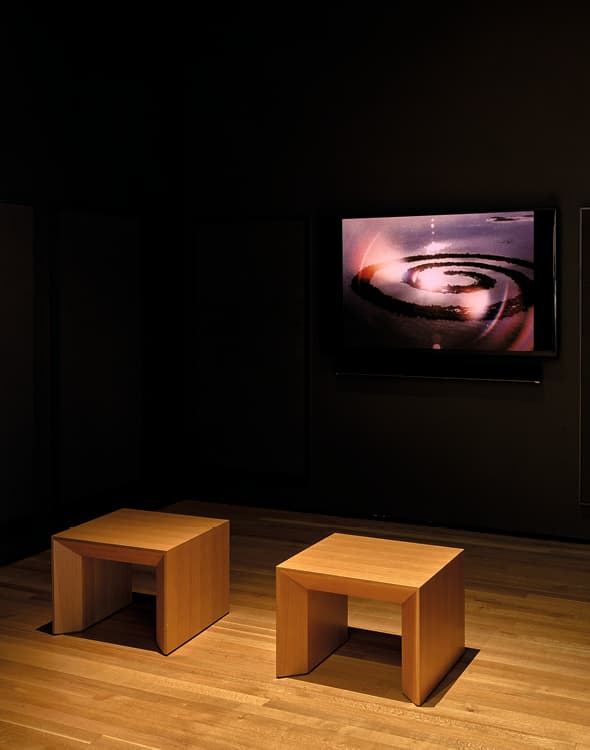
Robert Smithson's Spiral Jetty
- Magazine Article
- Exhibitions
A new acquisition debuts in the Video Projection Room

Robert Smithson's Spiral Jetty in the CMA's Video Project Room
From March through August, Robert Smithson’s iconic film Spiral Jetty will be featured in the Cleveland Museum of Art’s Video Project Room. The film was recently acquired by the CMA as part of a broader initiative to integrate time-based media into the contemporary collection, which currently comprises primarily painting and sculpture.
This film—later transferred to video—serves as a companion to Smithson’s monumental earthwork of the same name, which he constructed in 1970 at Rozel Point on the northeastern shore of Great Salt Lake in Utah. To create Spiral Jetty, Smithson and a crew transferred roughly 6,000 tons of black basalt rock and earth from a nearby shore to the work’s location. With these materials they built a coil measuring 1,500 feet long and approximately 15 feet wide, curling counterclockwise to the lake.

Spiral Jetty is one of the best-known works associated with the 1960s and ’70s movement Land art. A branch of Conceptual art from that period, Land art encompasses work made and sited in the landscape with natural materials. It reflects artists’ interest at that time in rethinking some of the oldest conventions in art, notably permanence: given their materials and outdoor settings, these works were inherently subject to deterioration and decay. The movement also represents the pursuit of new locations to display art beyond the traditional spaces of museums and galleries. As Smithson wrote soon after completing Spiral Jetty, “Artists themselves are not confined, but their output is. . . . A work of art when placed in a gallery loses its charge, and becomes a portable object or surface disengaged from the outside world.”1
Indeed, Spiral Jetty has been vulnerable to the natural forces of its location: from 1972 to 2002, the work was submerged due to the lake’s rising water levels. For the past 20 years, it has been mostly accessible and many have made pilgrimages to experience the work in person. Since 1999, Dia Art Foundation has owned and stewarded Spiral Jetty.
Because of Land art’s often remote locations and temporary durations, works were documented through notes, photographs, video, and film. Smithson’s film Spiral Jetty records the siting and making of the sculptural work, interspersing imagery of maps, aerial views of the lake, and footage of Smithson driving through the Utah landscape. Throughout, the artist describes the history, coordinates, and processes that informed the evolution of this historic project.